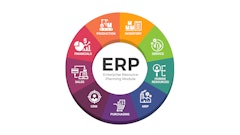
When most large companies were unable to cope with the increasing operational expenditures, the concept of procurement came about to integrate purchasing into the supply chain management and save additional costs.
The origin of procurement can be traced back to October 1983, when Peter Kraljic recognized that purchasing items in a company should be an essential part of strategy development instead of being treated as a complementary component in the supply chain.
Before this change, companies just believed procurement to support the supply chain process. But, over time, two new disciplines emerged from the basic concept of procurement known as direct and indirect procurement or spend.
Even though the branches have different goals requiring special methodologies, knowing how the two compare will help retailers, distributors and manufacturers plan for an effective supply chain policy.
Understanding direct procurement
Direct procurement is the act of procuring raw materials, goods and services for the production of goods. In simpler terms, procurement of goods directly related to the goods or used in the making of goods is called direct procurement.
For example, a car manufacturer will need to purchase steel, plastic, tires and other machinery to produce a car. The procurement of such materials that will make up the product will fall into direct procurement or direct spend.
If there is a hindrance, then the manufacturing processes are affected and the goods remain unfinished.
Understanding indirect procurement or spend
Indirect procurement alludes to money spent on anything other than the raw materials for the production of goods. All the expenses spent on the operating processes and maintenance that are not directly related to the goods are indirect spend.
For example, purchasing office supplies or printing materials are indirect procurement or spend in an organization as they are not directly related to the manufacturing of the goods.
That means that the defining difference between both is the departments allocated to handling it, the hierarchy of communication and how they’re handled internally.
Simply put, direct procurement matters are between the procurement team and the supplier. However, indirect procurement issues go through employees to their relevant teams before going through procurement if the item needed is not in stock.
Direct vs. indirect procurement
To further elaborate the differences between the two types of spend or procurements, let’s deep dive into how they are different from each other in terms of:
1. Supplier base
One of the key differences between the direct and indirect procurement processes is related to supplier relationship management. Teams responsible for direct spend will procure materials of high quality and durability as it directly affects the company’s reputation.
Direct procurement demands long-term relations with the suppliers rather than one-off transactions. Investments in strategic relations, as a result of direct procurement, ensures collaborative value for the stakeholders.
For this purpose, they invest a significant amount of their time finding the right suppliers who can deliver on time while focusing on innovation. Building a long-term relationship with such suppliers implies leveraging their R&D department. Supplier-enabled innovation results in highly differentiated offerings at less costs
Whereas the teams managing indirect costs mainly focus on spend management. These teams do not focus on streamlined and innovative suppliers which leads to less overall saving opportunities.
2. Spend volume and concentration
In direct procurement, the money spent is concentrated on limited materials and vendors under the control of a few departments, making tracking easier. They may be recorded in huge volumes as the bulk of important raw materials are purchased under this type of procurement.
Meanwhile, the indirect spend is dispersed in all the departments in a company, and if no proper spend control measures are used, it would be challenging to account for all expenditures. That’s because they’re based on the unique needs of each department and are bought on request rather than in a continuum.
3. Inventory management
With direct procurement, to guarantee a smooth production process and forestall delays, materials should be held in stock. Production has relatively stable needs, making stock a valuable resource in case of unexpected delays.
Conversely, indirect procurement is generated by request; that is, purchases are made when required, so the costs of stocking the materials compared to the case in direct procurement are lower. That also means that costs can vary depending on flexibility in requirements, so keeping indirect procurement materials in stock is contraindicated.
4. Impact on business
Direct spend affects the production of the goods, which means that any uncertainty or miscalculation can badly affect the profits and reputation of the business. By carefully researching direct procurement processes, strategists foresee and tackle any future inconsistencies that may harm the company.
Unlike direct procurement, indirect procurement does not usually have any significant impact on profitability or reputation. Unpredictability in the indirect procurement process is manageable and can be negated.
Importance of digital procurement
Indirect spend regularly has different, divided necessities frequently produced by an enormous number of employees within the organization. To smooth out and improve the process while choosing digital procurement arrangements, indirect spend teams focus on making an easy purchasing experience through user-friendly digital procurement software.
Organizations have started to understand that updating the direct procurement process can assist with streamlined measures, negate dangers, keep up quality and trim expenses.
Numerous groups are impeded by inconvenient frameworks that include more features but are bogged down by complex user interfaces connected to the company’s enterprise resource planning (ERP) frameworks. Complex systems delay the procurement and manufacturing processes.
Companies should opt for high-end and latest technologies to simplify the procurement process, save time and resources. Procurement software should have an interactive and user-friendly interface that can genuinely contribute to highly efficient procurement processes.
Conclusion
It’s critical to have a complete comprehension of what separates direct spend from indirect spend. Knowing these procurement processes helps strategists and employees to understand where to invest the company's resources.
It helps in focusing on the challenges that a company might face during the completion of the product. Although it’s imperative to spend time and effort managing direct procurement processes, a successful business will also consider its indirect procurement processes and adopt user-friendly procurement software technologies.
![Pros To Know 2026 [color]](https://img.sdcexec.com/mindful/acbm/workspaces/default/uploads/2025/08/prostoknow-2026-color.mduFvhpgMk.png?auto=format%2Ccompress&bg=fff&fill-color=fff&fit=fill&h=100&q=70&w=100)







![Pros To Know 2026 [color]](https://img.sdcexec.com/mindful/acbm/workspaces/default/uploads/2025/08/prostoknow-2026-color.mduFvhpgMk.png?ar=16%3A9&auto=format%2Ccompress&bg=fff&fill-color=fff&fit=fill&h=135&q=70&w=240)








